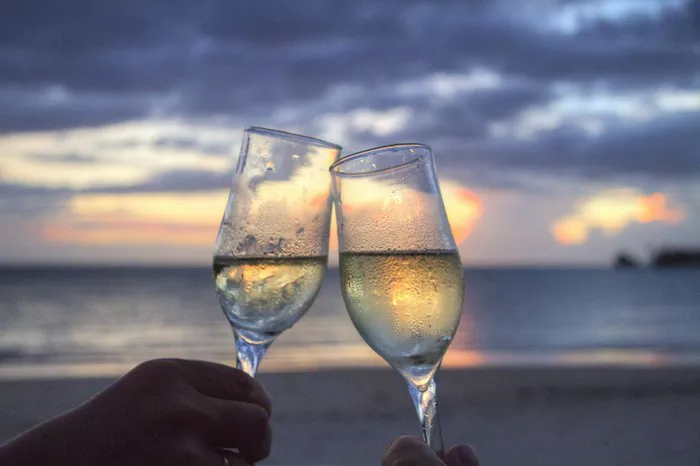When it comes to brunch cocktails, few beverages can rival the delightful and refreshing taste of a mimosa. Originating from the combination of champagne and orange juice, this iconic drink has become a staple at brunch tables and celebratory gatherings. One of the most common questions that arises when preparing mimosas is determining the ideal ratio of champagne to orange juice. Understanding how much champagne to use for mimosas is crucial to achieving the perfect balance of flavors and ensuring a delightful drinking experience.
The Art of Crafting Mimosas: Finding the Right Ratio
Creating the perfect mimosa involves a delicate balance between champagne’s effervescence and the citrusy sweetness of orange juice. Achieving the ideal ratio is subjective and can depend on personal preferences, occasion, and the quality of ingredients. However, a classic and widely accepted guideline suggests using equal parts champagne and orange juice. This traditional 1:1 ratio ensures that neither the champagne nor the orange juice overpowers the other, resulting in a harmonious blend of flavors.
Factors Influencing Champagne to Orange Juice Ratio
Several factors influence the champagne to orange juice ratio when making mimosas. The first consideration is the type and quality of champagne being used. Higher quality champagnes might require a lesser quantity to maintain their distinctive taste, while lower quality or sweeter champagnes might necessitate a different ratio to balance the flavors.
Another critical factor is personal preference. Some individuals prefer a stronger champagne flavor and opt for a higher champagne-to-juice ratio, while others may prefer a lighter, more juice-forward mimosa. The occasion also plays a role; a festive celebration might call for a higher champagne ratio, while a casual brunch gathering could warrant a lighter touch.
Furthermore, the type of orange juice utilized can impact the drink’s taste. Freshly squeezed orange juice tends to have a more vibrant and tangy flavor compared to store-bought varieties, which might contain added sugars or preservatives. Adjusting the ratio accordingly based on the sweetness and acidity of the orange juice is advisable.
Finding the Perfect Balance: Experimentation and Adjustments
Given the subjective nature of taste preferences, finding the perfect champagne to orange juice ratio often involves a degree of experimentation and adjustment. Bartenders and enthusiasts often recommend starting with the classic 1:1 ratio and then making alterations based on individual taste preferences.
For those seeking a stronger champagne presence, adjusting the ratio to 2 parts champagne to 1 part orange juice can elevate the drink’s effervescence and champagne’s distinctive characteristics. Conversely, individuals favoring a lighter and more juice-centric mimosa may opt for a 2 parts orange juice to 1 part champagne ratio, creating a smoother and fruitier profile.
Tasting and adjusting the proportions gradually is key to achieving the desired balance. By incrementally adding more champagne or orange juice, one can tailor the mimosa to suit personal taste preferences or the specific occasion.
Considerations for Serving Size and Quantity
Determining the quantity of mimosas needed for an event or gathering is as crucial as nailing the ideal champagne to orange juice ratio. Factors such as the number of guests, duration of the event, and availability of other beverages should all be taken into account.
A general rule of thumb suggests estimating around three mimosas per guest for a brunch or daytime event lasting approximately two hours. This estimation provides a buffer for guests who may consume more or less and ensures an ample supply of the beverage throughout the gathering.
When calculating the amount of champagne needed, consider the size of the mimosa glasses being used. Typically, a standard mimosa glass holds around six to eight ounces, allowing for easy portion control and adjustment of the champagne to orange juice ratio based on glass size.
It’s advisable to prepare a larger batch of mimosa mix in advance by combining the champagne and orange juice separately from the ice. This allows for easier and quicker serving during the event while maintaining the beverage’s freshness and effervescence.
Enhancing Mimosas: Beyond the Basic Recipe
While the classic mimosa recipe consisting of champagne and orange juice remains a timeless favorite, there are numerous ways to elevate this beloved cocktail. Experimenting with different fruit juices, such as pineapple, peach, or grapefruit, can add a unique twist and create variations known as “tropical mimosas” or “bellinis.”
Additionally, incorporating flavored liqueurs like triple sec, elderflower liqueur, or flavored syrups can enhance the mimosa’s complexity and introduce new layers of flavor. A splash of grenadine or a garnish of fresh berries can add visual appeal and further tantalize the taste buds.
For a non-alcoholic version, substituting champagne with sparkling water or soda creates a refreshing mocktail suitable for all guests, including those abstaining from alcohol.
Conclusion
The allure of mimosas lies in their simplicity and versatility. Determining how much champagne to use for mimosas is a matter of personal taste and occasion. Whether following the classic 1:1 ratio or experimenting with different proportions and ingredients, the key is to strike a balance that pleases the palate and enhances the overall drinking experience.
Remember, the joy of crafting mimosas lies not only in mastering the ideal champagne to orange juice ratio but also in the creative exploration of flavors and presentations. So, gather your ingredients, raise your glasses, and toast to the delightful journey of crafting the perfect mimosa!


